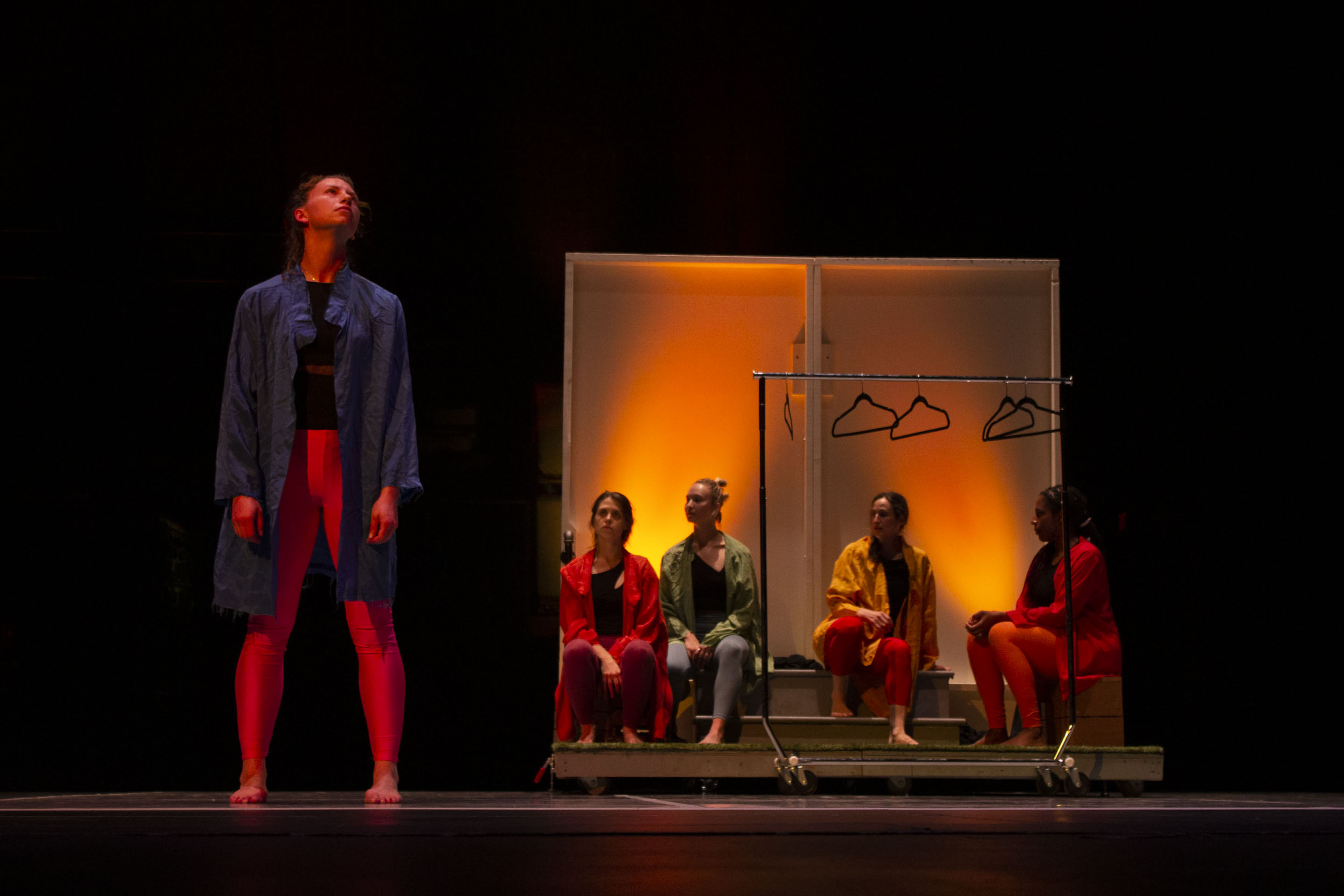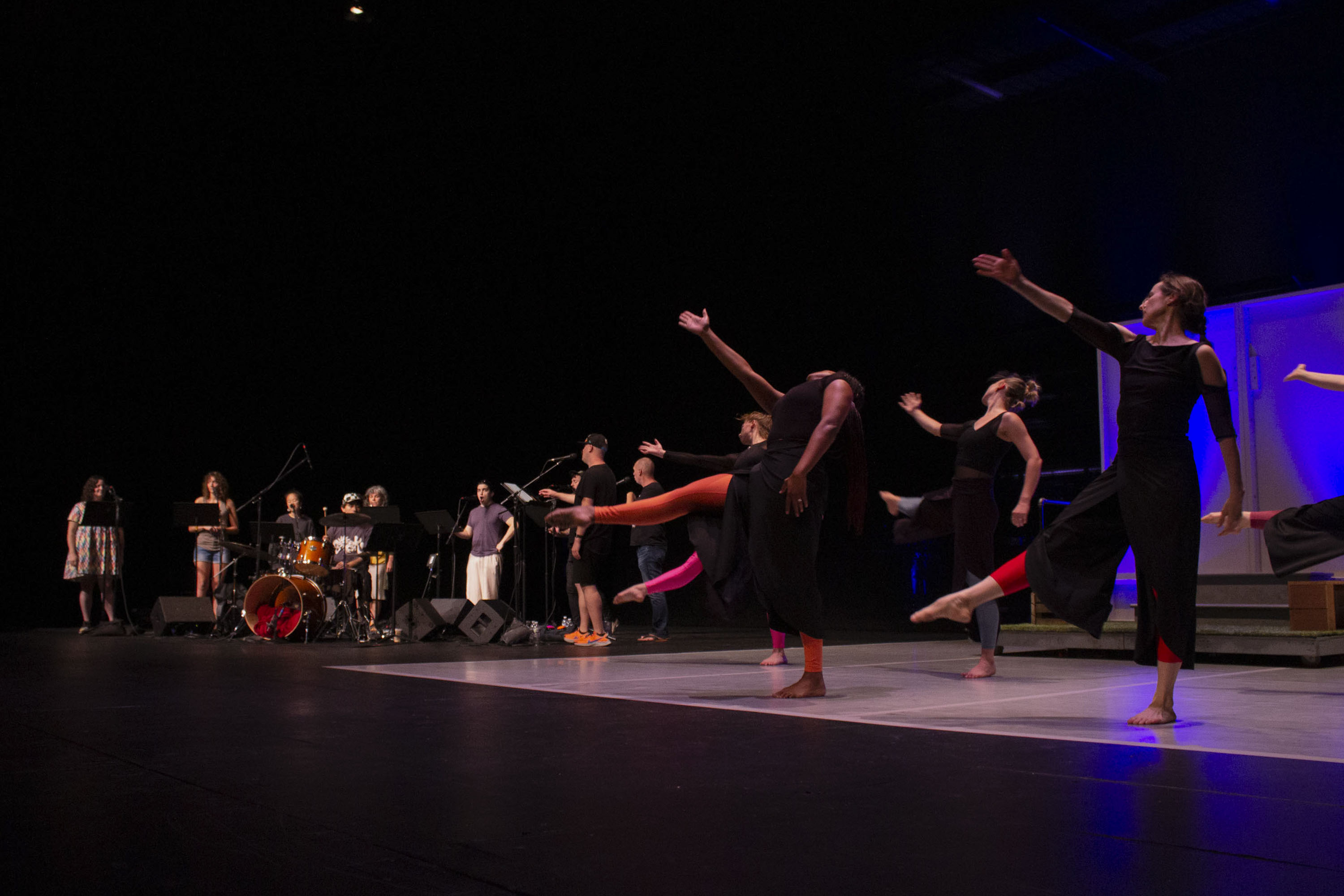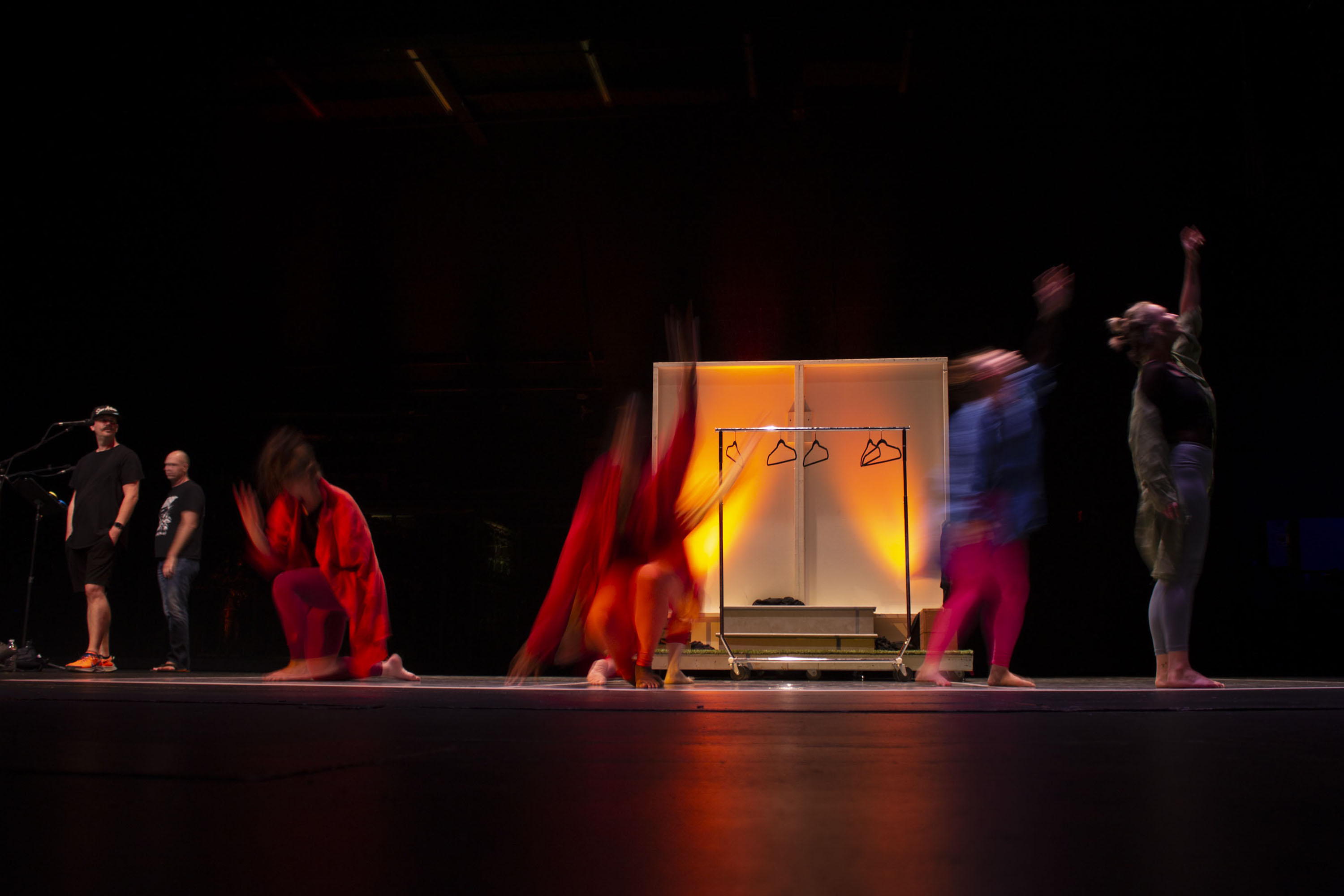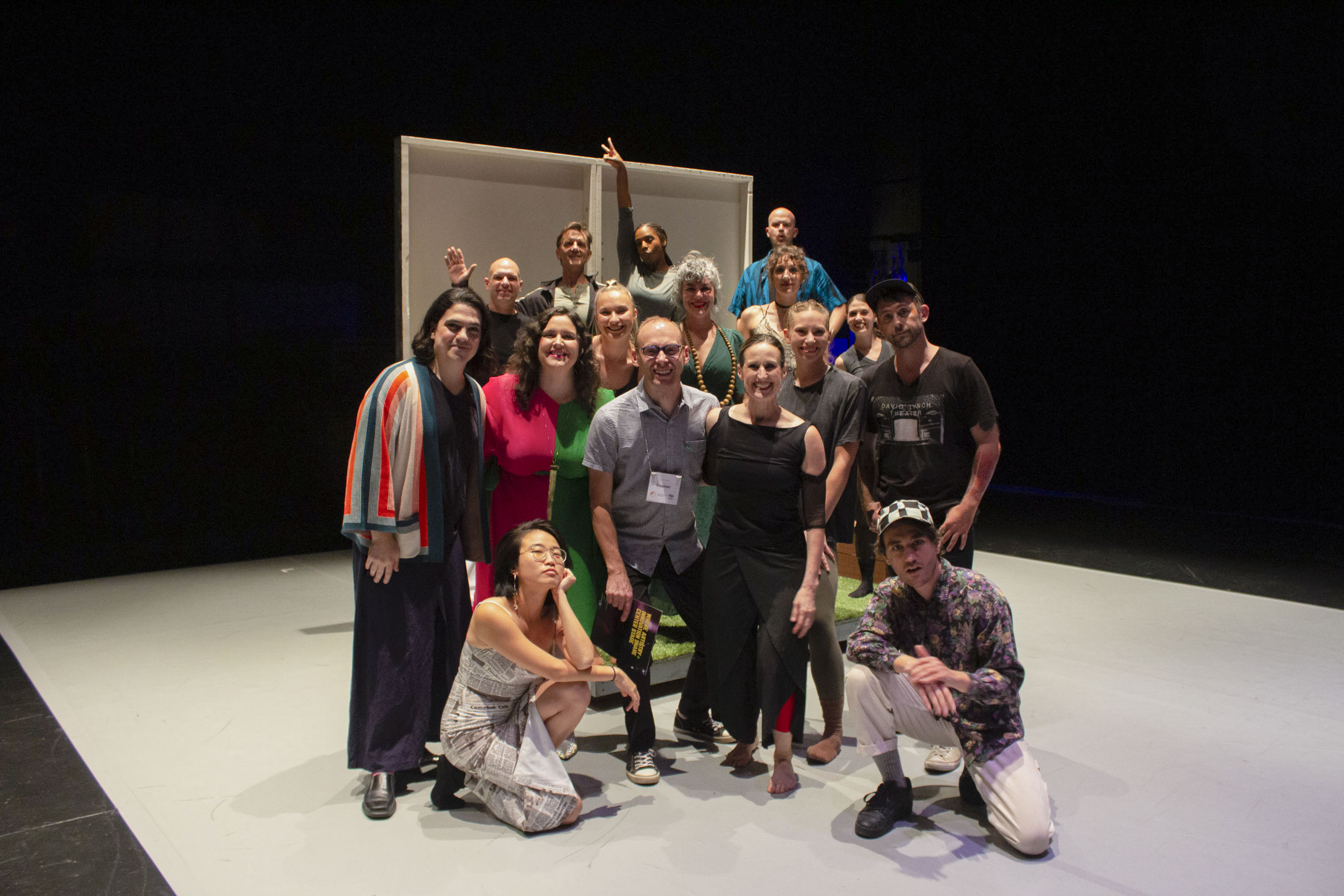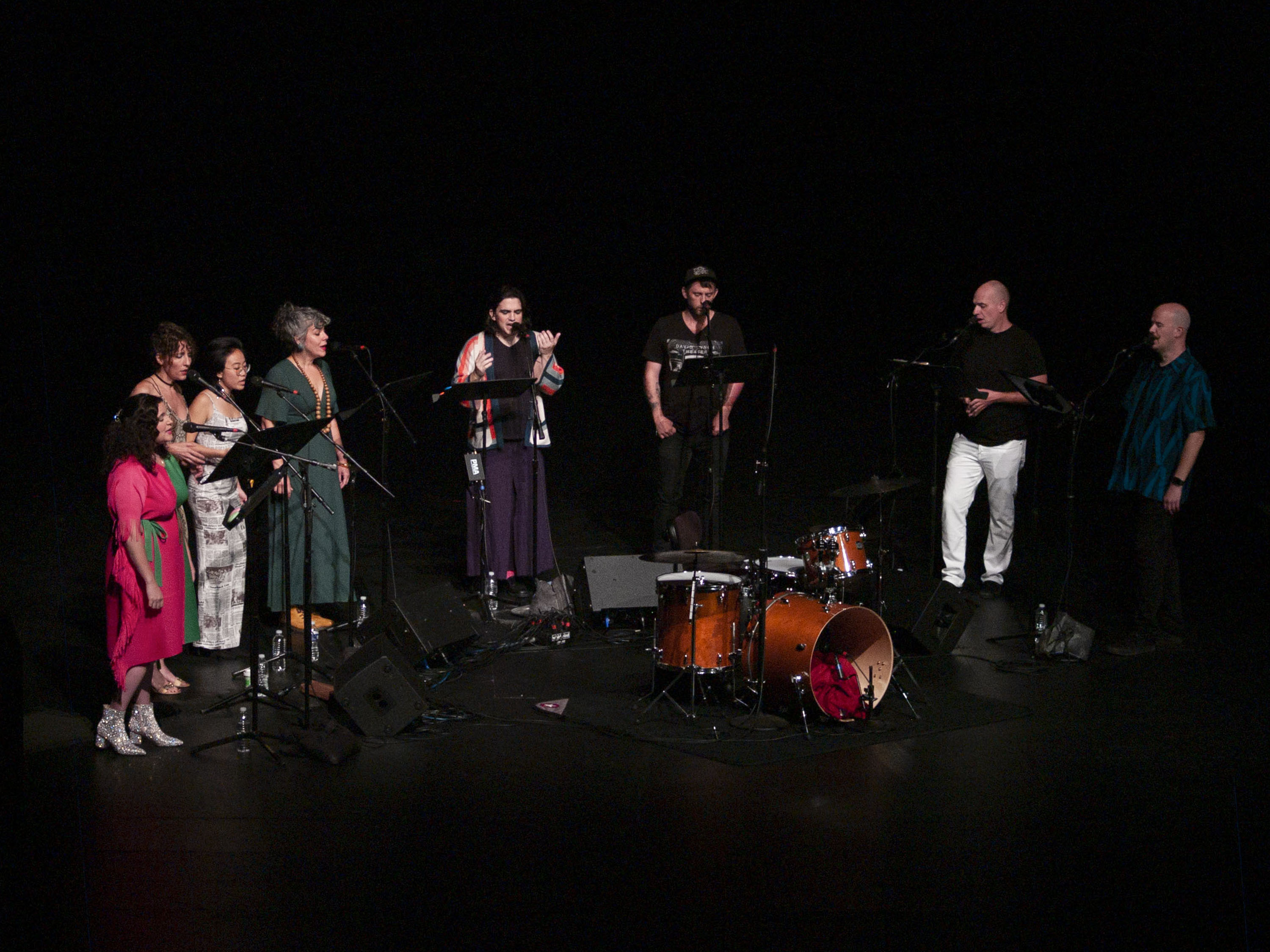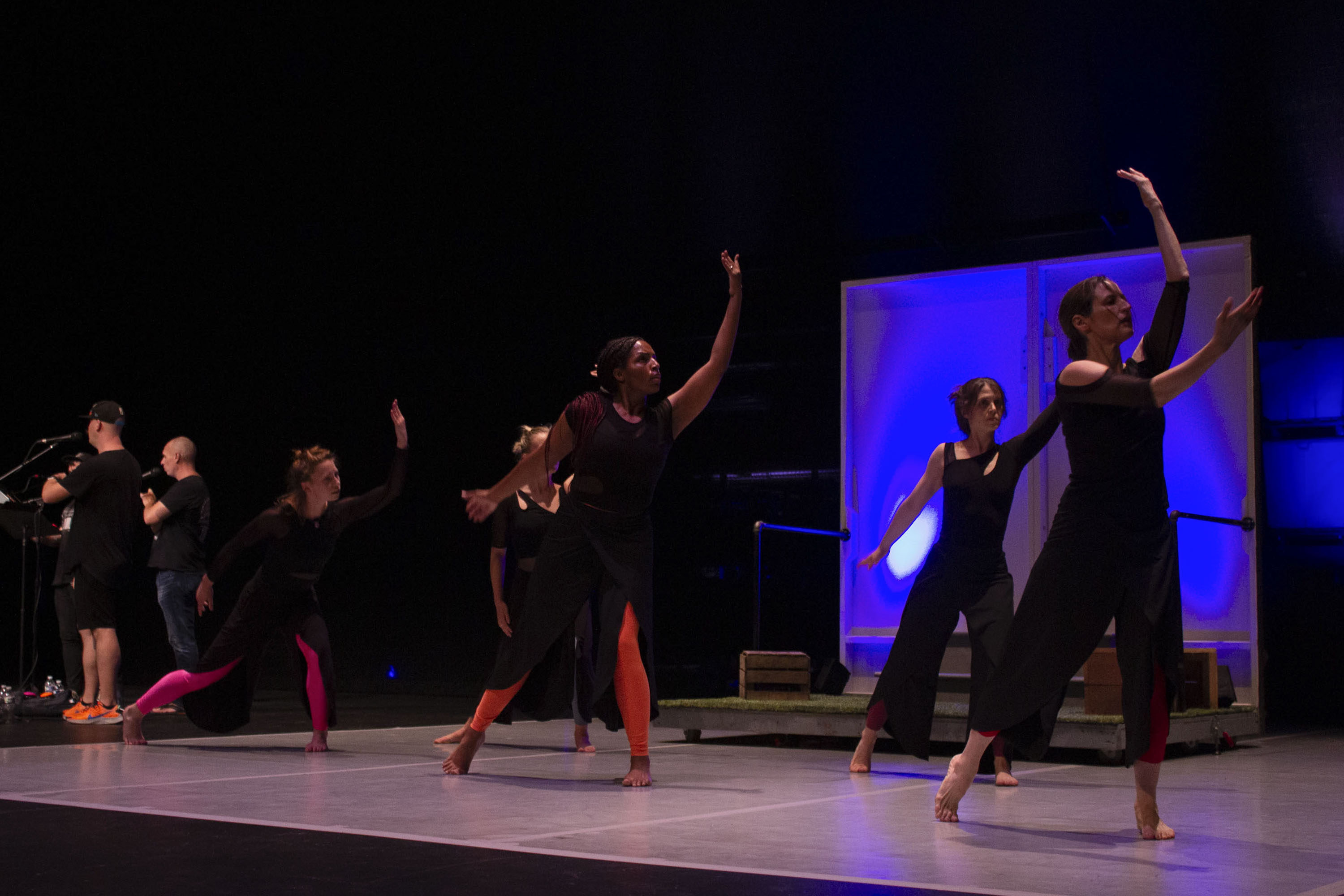Blurred Bodies
Stephen Neely (2023)In Blurred Bodies, Stephen Neely (Milton and Cynthia Friedman Assistant Professor of Music) created a spectacle where two world class artists (Roomful of Teeth and Attack Theater) strive to create the other’s art through their own medium. Inspired by the Plastique Anime exercises of Emile Jaques-Dalcroze (1865-1950), the project asks if there are actually any true lines between music and movement. Contrasting with more common ‘concerts’ where a music ensemble is assumed to make sounds in service of the soundscape, or a dance company is assumed to make choreographic choices in service of a visual kinesthetic canvas, this collaboration charges the musicians with creating audible gesture and the dancers in accomplishing kinesthetic/somatic music.
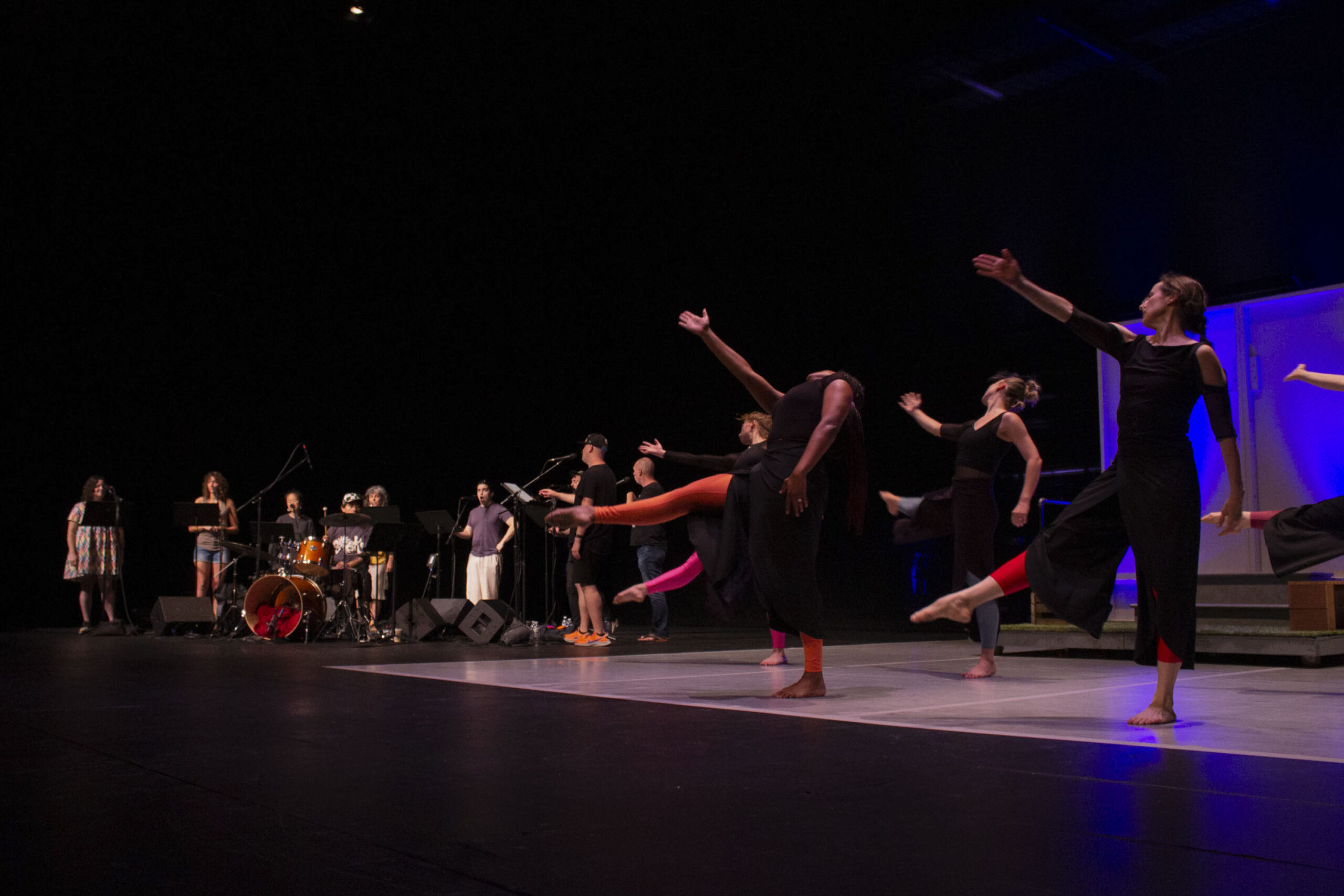
The Jaques-Dalcroze agenda states that the role of music is to feel. Music must get ‘in the body’ to achieve a level of relevance. Connected-to-the-body vs disconnected is a threshold that is explored in the Jaques-Dalcroze philosophy. What is less-discussed is the role of movement as a ‘leading’ medium. Movement in Dalcroze teaching is regularly presented as a tool to amplify the feeling of the music. In the Blurred Body project, the goal is to give equal musical worth to the unsounded moving body – leading us to question more common assumptions of music. My ongoing research explores the ways in which ‘musical knowing’ can inform our ‘extra-musical’ lives. The Blurred Bodies project hopes to expand knowledge in both of these areas.
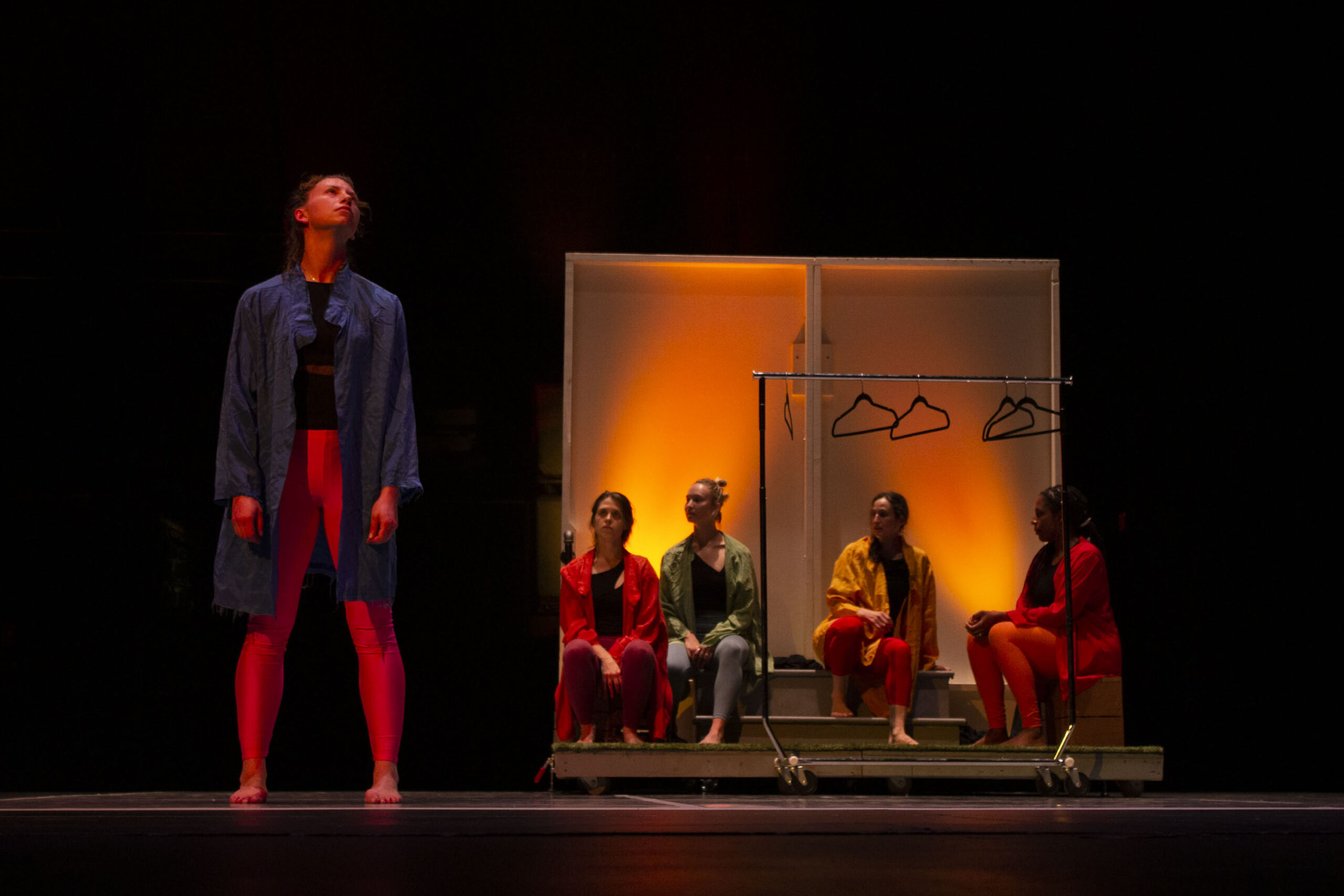
The first challenge is to address “musical knowing”. Taking Jaques-Dalcroze’s lead, the project investigates the claim that singing creates ‘music in the room’, by requiring first an encounter with a feeling-experiencing body. In Blurred Bodies, this music in the room is forced on the performers and is presented as an invitation to the audience. A second challenge in the project is to draw connections to ‘extra-musical’ interactions. If the lines between aural and kinesthetic are blurred in the somatic, then we have an opening to consider all of our feeling experiences through the lens of the somatic, and the terms “musical” and“music” then gain new meaning. So we ask, how might our mundane interactions be reinterpreted as somatic spectaculars? What are the ‘gestures’ of our mundane lives? The answers to these questions have impact for performance studies in music and dance, but also for any fields interested in interaction, experience, or community. How do we design a more beautiful interaction? Neely’s hope is that this project will further the investigation toward these answers.
This project was made possible in part by support from the Frank-Ratchye Further Fund Grant #2023-036. Additional images can be found here.
